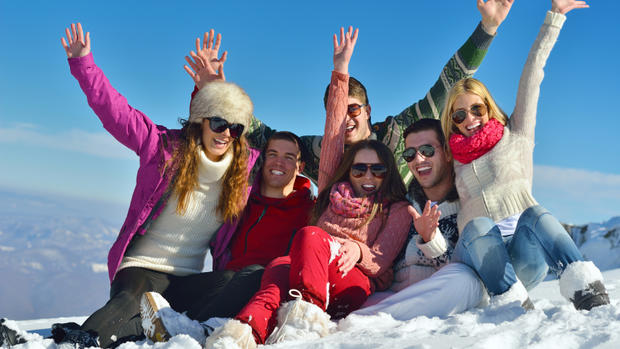Top safety tips for surviving the blizzard of 2015
The blizzard of 2015 is upon us. With a blizzard warning issued for a 250-mile swath of the Northeast, including New York and Boston, tens of millions of people are in the storm's likely path. Some parts of the Northeast are expecting up to three feet of snow.
Here's what to do to stay safe in the storm:
1. Don't drive. "Assume conditions will be unsafe," said New York Mayor Bill De Blasio. Ice and snow make driving conditions treacherous. If you must go out in the storm, make sure your car has at least half a tank of gas and is packed with emergency supplies including a first aid kit, jumper cables, a windshield scraper, spare tire, cell phone and charger and blankets and extra warm clothing. Once you're in your car, drive slowly, and if you get stuck, stay inside your car for warmth while you call for help.
2. Be prepared. Shoppers are already scrambling to stock up on groceries for the week. The Centers for Disease Control and Prevention recommends keeping a week's worth of food and safety supplies including water, canned foods or foods that don't require cooking, non-electric can opener, baby food, prescription medications and a flashlight.
3. Stay warm. Infants and the elderly are most susceptible to hypothermia and frostbite. If they insist on playing in the snow, keep children bundled up -- make sure they're dressed in warm layers with a scarf and head covering and warm, waterproof boots. Stay close to home, and take frequent breaks inside to warm up. Signs of hypothermia include tingling sensations on nose, ears, toes and fingers, cloudy thinking and slowed heart rate. Go inside and stay there if you experience any of these symptoms.
4. Put down the snow shovel. A 2010 study found that heavy snowfall combined with cold weather and low pressure is associated with an increase in heart attacks. Some doctors recommend avoiding snow shoveling if you are over 55 or have a history of heart problems. If you must shovel the snow, be aware of the health implications; take breaks, dress warmly and remember to breathe.
5. Mind the gas. Fuel-burning space heaters, portable generators and outdoor appliances can cause the build up of carbon monoxide, a colorless, odorless and dangerous gas. Each year an average of 430 Americans die from carbon monoxide poisoning, according to the U.S. Centers for Disease Control. Symptoms of carbon monoxide poisoning mirror flu symptoms: headache, nausea, vomiting, fatigue, chest pain, weakness and dizziness. Make sure your home has a carbon monoxide detector and never operate portable gas heaters in enclosed spaces. If you believe you may have been exposed to carbon monoxide get fresh air quickly and seek medical attention.
